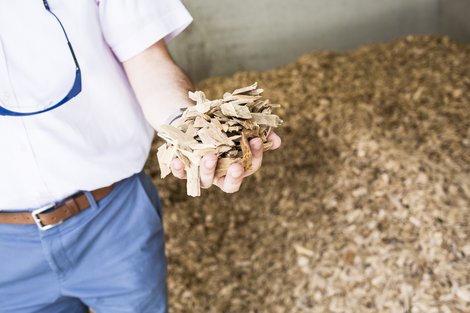Where sneakers are made from algae
Sustainable Development

Home to a thriving bioeconomy and rapid advances in green hydrogen, Saxony-Anhalt is showing the world what true sustainability looks like
The German state of Saxony-Anhalt is well and truly becoming a beacon of sustainable commerce. And there are many reasons for this, not least the unique base from which future technologies can build. There is a chemical industry that stretches back over a 100 years, agricultural resources, well-developed plants for generating the renewable electricity that accounts for around 60% of the state’s energy mix, and a unique concentration of universities and research institutions. Last but not least, the phasing out of coal and the structural changes in central Germany make it possible to think modern, to implement innovation in the state, and to generate sustainable economic growth.
Prime conditions for innovation
One of the sectors already developed is the bioeconomy – in which Saxony-Anhalt is the top of all federal states with 16.4% of industrial turnover generated by the sector. “Saxony-Anhalt is reinventing itself and the bioeconomy plays a major role in this, because it can build on the state’s optimal framework for innovation,” says Thomas Einsfelder, Managing Director of Investment and Marketing Corporation Saxony-Anhalt
mbH (IMG) – the agency responsible for promoting business in the state.
The agriculture sector contributes significantly to the state’s bioeconomy, the soil is extremely fertile, and agricultural research facilities are trying out new crop management methods. In addition, several companies are developing herbal medicines and future foods, as well as manufacturing innovative products that replace fossil resources. For example, in Leuna in the south of Saxony-Anhalt, the Bioeconomy Cluster together with the Fraunhofer Center for Chemical-Biotechnological Processes CBP has launched the BioEconomy Hub, a technology and service centre that will accompany young startups on their journey from idea to a market-ready product. Making the value chain sustainable right from the start IMG is especially proud that in 2020 Finnish group UPM established a base in the Leuna Chemical Park. The company is investing €550m in a biorefinery in which 220,000 tonnes of biochemicals will be produced annually from sustainably harvested wood. Their products are used for plastics, cosmetics, detergents, or rubber and replace substances produced using fossil resources. In particular, UPM was keen to capitalise on the sales opportunities that will arise from Saxony-Anhalt’s established chemical industry, and also the potential of being powered by green electricity in the region. For companies already present in Saxony-Anhalt, UPM offers an opportunity to make their products sustainable right from the start of the value chain.
Green hydrogen as a key technology
An important element to creating the sustainable business destinations of tomorrow is the potential to produce green hydrogen. As Dr Christof Günther, Managing Director of the infrastructure company InfraLeuna GmbH, explains: “Supplying the second longest hydrogen-pipeline system in Central Europe, Leuna is the centre of hydrogen production in the region. Our customer Linde GmbH will commissionthe world’s largest PEM electrolyser for the production of green hydrogen this summer. In addition, the Fraunhofer-Gesellschaft operates its ‘green hydrogen lab’ on site and is going to concentrate its hydrogen competencies here in Leuna. With a new 45 MW solar energy plant, InfraLeuna will provide green electricity for further growth in green hydrogen. Our customers already have big plans.”
Green understanding
Completely different, but also green, is algae. A worldclass competence centre is located in the Anhalt University of Applied Sciences in Köthen, where a group led by Prof. Dr. Carola Griehl has been involved in biotech research on various types of algae for over 20 years. “We want to obtain active ingredients for nutrition, medicine and cosmetics and also explore its versatility as renewable energy sources,” she says. The variety of possible products is huge, and the first sneakers made of algae plastic are already on the market. Networking with partners in the region is essential to Griehl, for example with the newly created centre for natural-substance-based therapeutics at the university. There is also a cooperation with Roquette Klötze in the Altmark to cultivate vitamin-rich chlorella microalgae in industrial size photobioreactors – the eventual product is a popular and nutritious food supplement. The unique selling point of algae research at the Anhalt University of Applied Sciences is on the brink of attracting the first overseas company to Saxony- Anhalt, AlgaeCytes Ltd. from the UK, which has plans to set up in Dessau where the world’s first algae biorefinery plant is to be built. As part of a worldwide search for a location, Dessau prevailed because microalgae technology is an important part of the state’s regional innovation strategy. Also, the excellent infrastructure guaranteed proximity to R&D was a huge attraction. These, and many more besides, are examples of the research institutions, startups and international companies that come together in Saxony-Anhalt to pioneer a new sustainable future for Germany, Europe and the world.

